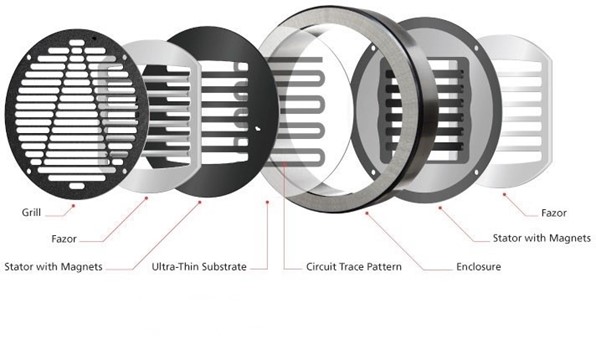HiFiMAN and the World of Planar Tech
The last couple of years has seen an explosion in popularity for HiFiMAN headphones, especially their Deva and Sundara models. One word that often crops up when looking at HiFiMAN products is planar, a key technology that makes these headphones sound so good. Not sure what planar technology is? Let us try to explain.
Sometimes referred to as orthodynamic headphones, planar magnetic headphones differ to the more traditional dynamic headphone. Dynamic headphones generate sound by using a coil of wire (often called a voice coil) attached to a diaphragm, and a suspension is created to allow the coil and diaphragm to move back and forth like a piston, moving enough air to produce sound. Depending on the quality of the dynamic headphone speaker cone, there will be inconsistencies across the frequency spectrum, meaning that though many dynamic headphones have a very nice sound signature, they are not necessarily 100% accurate when they reproduce an audio signal. Dynamic headphones also deteriorate quicker over time.
In contrast, planar magnetic headphones use an incredibly thin, lightweight, and resilient film diaphragm (around 1/10th the thickness of a human hair), stretched over a sturdy frame, and placed between magnetic arrays. In these headphones, the coil is unwound and spread across this film diaphragm. As the current flows, the magnetic field is created within the headphone that causes the diaphragm to move.
What are the benefits?
The film diaphragm in planar magnetic headphones is often lighter than the air it is moving, meaning that they can be driven with an incredible accuracy. The sound they produce feature faster transients, more responsive bass, more detailed highs and a wider dynamic range than other headphones.
As the voice coil is spread over a larger area than in traditional headphones, planar magnetic headphones are also much better at dissipating heat and can handle a huge amount of power without distorting.
Overall, this type of headphone features higher sensitivity, can play louder with tighter control and reduced colouration, and more controlled directivity. However, their design means they will suffer from more leakage than traditional dynamic headphones.

Who are these headphones best suited for?
Planar magnetic headphones are best suited to those who want to want to have a very analytical, accurate sound that is more immersive overall than what a dynamic headphone could offer. However, those looking to invest in such a pair of headphones or earphones must be aware that they are much larger than traditional headphones, though not necessarily heavier and more fatiguing to wear over a prolonged period.
Sound interesting? Fortunately, planar technology no longer needs to break the bank the same way that it did even 3 or 4 years ago. Headphones such as HiFiMAN’s Deva and Sundara models are a perfect way to dip your toes into the world of planar tech. Check them out on AMP3’s site!














